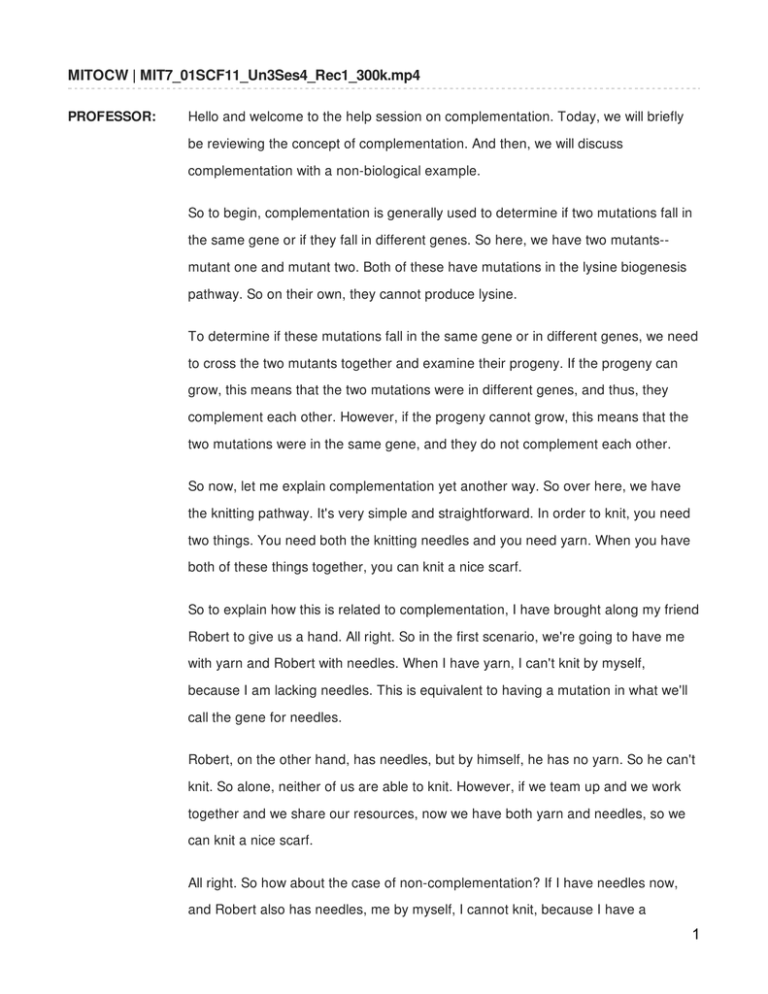MITOCW | MIT7_01SCF11_Un3Ses4_Rec1_300k.mp4
advertisement

MITOCW | MIT7_01SCF11_Un3Ses4_Rec1_300k.mp4 PROFESSOR: Hello and welcome to the help session on complementation. Today, we will briefly be reviewing the concept of complementation. And then, we will discuss complementation with a non-biological example. So to begin, complementation is generally used to determine if two mutations fall in the same gene or if they fall in different genes. So here, we have two mutants-mutant one and mutant two. Both of these have mutations in the lysine biogenesis pathway. So on their own, they cannot produce lysine. To determine if these mutations fall in the same gene or in different genes, we need to cross the two mutants together and examine their progeny. If the progeny can grow, this means that the two mutations were in different genes, and thus, they complement each other. However, if the progeny cannot grow, this means that the two mutations were in the same gene, and they do not complement each other. So now, let me explain complementation yet another way. So over here, we have the knitting pathway. It's very simple and straightforward. In order to knit, you need two things. You need both the knitting needles and you need yarn. When you have both of these things together, you can knit a nice scarf. So to explain how this is related to complementation, I have brought along my friend Robert to give us a hand. All right. So in the first scenario, we're going to have me with yarn and Robert with needles. When I have yarn, I can't knit by myself, because I am lacking needles. This is equivalent to having a mutation in what we'll call the gene for needles. Robert, on the other hand, has needles, but by himself, he has no yarn. So he can't knit. So alone, neither of us are able to knit. However, if we team up and we work together and we share our resources, now we have both yarn and needles, so we can knit a nice scarf. All right. So how about the case of non-complementation? If I have needles now, and Robert also has needles, me by myself, I cannot knit, because I have a 1 mutation in that I have to no yarn. Robert also has needles and he also does not have yarn. So by himself, he can't knit either. This time, when we team up and we try to work together, even if we share our needles, we still can't knit, because we have no yarn. So this is the case of noncomplementation. Thanks, Robert. This concludes the help session on complementation. Thanks for joining us. 2






